
Emulsion Recipe Perfection
| Previous | Next | Emulsion Home |
August 8-9, 2006
Made considerable changes to prime emulsion: Refer to CR#2 (Change Reference No.2) for questions regarding new recipe.
Continue to make adjustments to digital negatives. Not satisfied yet.
Results: Nearly flawless emulsion. Peppering is still visible under the microscope. Next emulsion batch, I will push the changes to see if I can totally eliminate the problem. Ron says streaking is a common problem inherent to the inconsistent quality of baryta paper. He suggests an addition of 1% sodium sulfite to the emulsion might eliminate the problem. I am on the brink of deciding that baryta is an expensive nuisance.


The Holy Grail: The pyro-developed 5 x 7 negative. My coating blade doesn't cover enough area to print the whole negative, but I couldn't resist seeing how it looked. Who knows, this may be my only batch of perfect emulsion! Hopefully, I can get digital negs to this stage. (Fabriano Artisto).
August 16-17, 2006
Been working on digital negatives. Maybe getting closer. I keep reminding myself that I can't afford a big coating blade.
I revisited that paper fork-in-the-road, and decided to work with Fabriano first (and maybe Somerset Satin).
Two new "discoveries": The emulsion is very sensitive to developer dilution (higher dilution, lower contrast), and sizing/surfacing presents possibilities.
I coated a sheet of Fabriano with "World's Best White Acrylic Gesso" made by Daniel Smith Art Supplies (http://www.danielsmith.com/). The brush marks show up so I'll have to work on another coating method, but it is definitely a different look; crisper, as sharp as baryta paper, but retains the look of being 'real' paper.
 |
|||||
Fabriano (plain) |
|||||
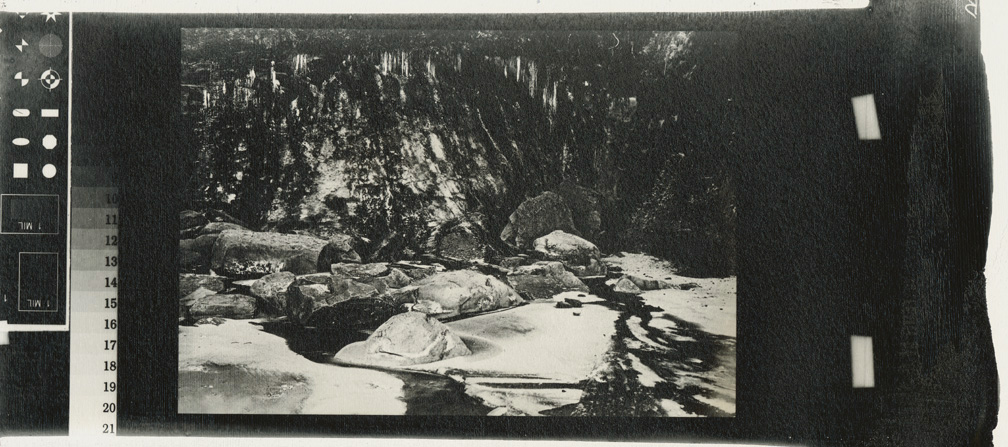 |
|||||
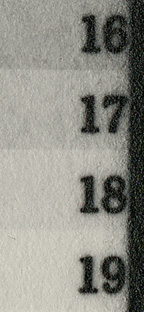 |
Fabriano (plain) 500% |  |
Fabriano (coated with gesso) 500% | Fabriano (coated with gesso) The foggy appearance on the right is an artifact of scanning. It doesn't appear on the print, which is a beautiful, glossy black. |
|
August 19-21, 2006
Lot 3:
I pushed the changes and eliminated even the microscopic peppering. (I will make two additional identical batches before I claim definitive success.) There are apparently many variables. I am going in basically the opposite direction from Ron, yet I assume his results are as satisfying as mine. It would be interesting to tease out the steps to determine the synergies and antagonisms of the process. I am handling the emulsion much more gently and at a consistently lower temperature, with the exception of coating. 40-43 degrees C seems to be a good coating temperature. For Lot 3, I increased the silver content by 10%. and the gelatin concentration by 25%. Please refer to CR3 (change reference number 3).
I printed a new digital negative and developed it in ZonalPro Factor One. I'm not thrilled with my digitals yet, but I think (hope!) I'm on the right track. I'm in the "figure-it-out-myself" phase of my learning curve. I know there are any number of good guides (especially Dan Burkholder's) but I really need to understand a thing, not just learn a process. (that's a big mea culpa: anything I memorize without understanding blows away in the first stiff wind)
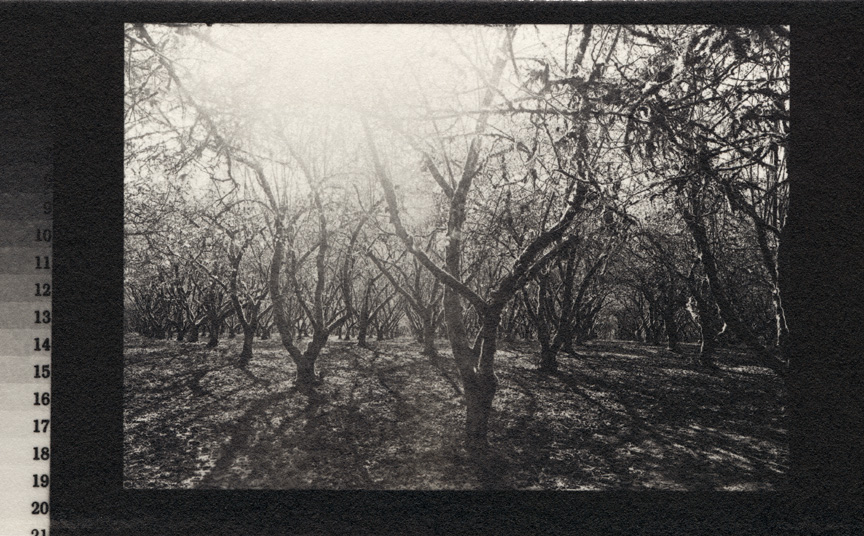
Lot 3/ Fabriano Artisto x-white/ Zonal pro Factor one, 1oz/500ml water
I have been looking forward to working with Amidol developers. It's expensive enough that I thought I'd wait until I was sure of the emulsion before I mixed up a batch. Probably a mistake. Pictorico transparency film is expensive, too. A quicker person would have figured out that an emulsion as responsive to developer characteristics as this one seems to be would complicate matters.
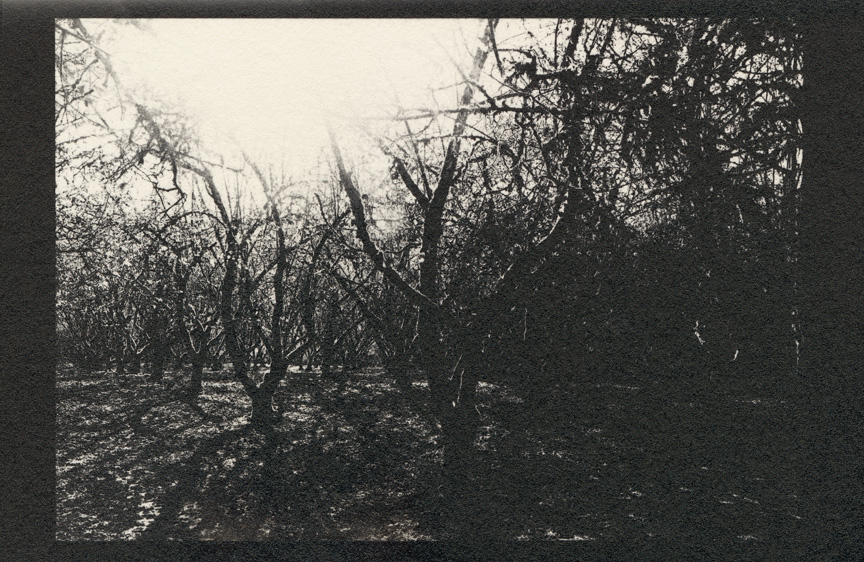
Same negative, amidol developer. The black is a thing unto itself. Flawless, deep and lush. You want to stroke it. Again, any "foggy" appearance is an artifact of flatbed scanning picking up the slight tooth of the Fabriano. But...I couldn't get the exposure and contrast figured out before I ran out of paper. Unfortunately, I need the next couple of weeks to wrap up some paying gigs. It's going to be a long wait for me. This has been a very interesting and satisfying adventure.
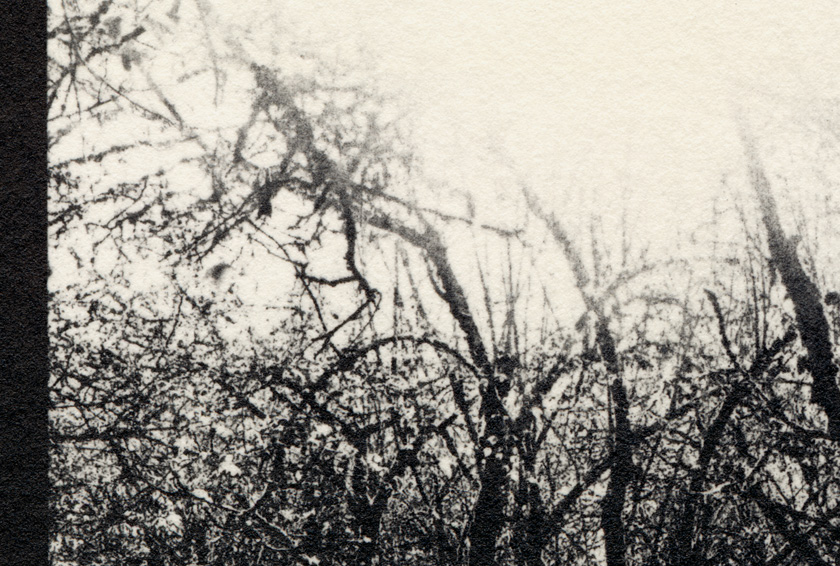
Crop of above print at 500%
Lootens' Amidol Black Developer (from "The Darkroom Cookbook" 2nd ed. written by Stephen G. Anchell)
Water at room temperature 750.0 ml
Sodium sulfite 24.5 g
Citric acid 0.6 g
Amidol 8.1 g
Potassium bromide 0.6 g
Potassium thiocyanate 0.3 g
Water to make 1.0 liter
| Previous | Next | Emulsion Home |